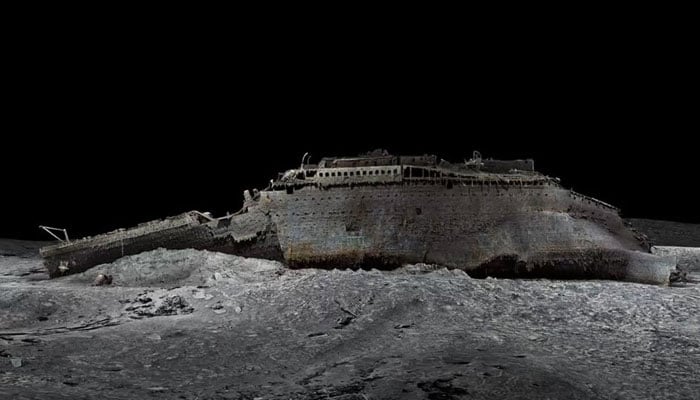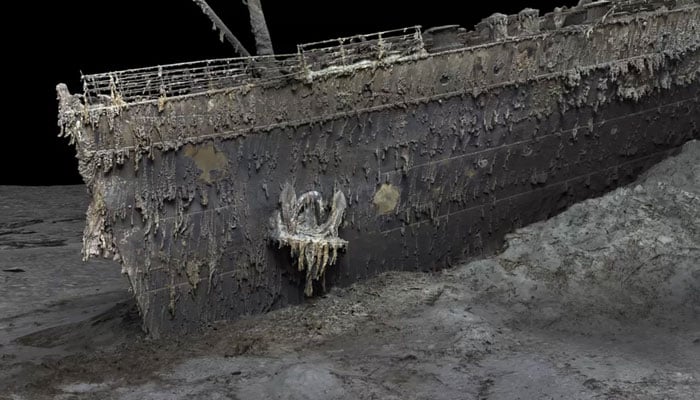WATCH: First-ever 3D view of Titanic's wreck leaves viewers in awe
Using the submersible camera systems, team performed photogrammetry passes on wreck, allowing highly accurate and photoreal 3D models of RMS Titanic to be produced
May 18, 2023
New scientific developments have enabled experts to look into more details and explain how some historic past events may have unfolded in a way never imagined before and the shipwreck of Titanic is one such incident that still tickles the curiosity of the fans of maritime history.
A similar dive was made possible by a full-scale digital scan of the Titanic released on Wednesday. The digitally-mastered scan shows dry images — as if seawater has been drained— of the most famous shipwreck. It was made possible by deep-sea mapping.
The new insight into the vessel may allow the investigators to learn what led to the sinking of a passenger liner when it was on its maiden journey in 1912.
The shipwreck lies at a depth of 3,800m (12,500ft) in the Atlantic Ocean.
Scientists created the first-ever exact digital twin of the Titanic wreck under the largest underwater scanning project in history.
According to the press release from deep sea investigators Magellan and filmmakers Atlantic Productions, "scientists revealed details of the tragedy and uncovered fascinating information about what really happened to the crew and passengers on that fateful night of April 14, 1912."

Parks Stephenson, a Titanic analyst, told BBC Radio 4 that the images could provide new forensic evidence that could prompt a rewrite of how the sinking unfolded.
Stephenson: "I've seen enough in my years of studying the Titanic that I am suspicious of the narrative that we’ve become accustomed to over the past century."
"It was a major step to driving the narrative of the Titanic towards evidence-based, scientific research and not speculation," Stephenson added who serves as the executive director of the ship and museum USS Kidd.
“Using the submersible camera systems, the team performed dedicated photogrammetry passes on the wreck, allowing highly accurate and photoreal 3D models of RMS Titanic to be produced,” the company said.
In photogrammetry, pictures of any object are taken and they are converted into 2D 3D models.
After the ship was found in 1985, nearly 350 miles off the coast of Newfoundland Canada, it was learned that it was broken.

While footage has been taken of the wreck, he said submersible cameras "only see small portions of the wreck site at any given moment."
Earlier, he said that "people filled in the gaps by referring back to what the Titanic looked like as a whole ship, so as you paint the ship or try to build a model of it, it’s going to have a bias to how it originally looked."
“It will be accurate but you’ll tend to make it more complete than it actually is,” he noted.
The new scan was "devoid of that," the analyst said while underlining that "it is completely based on data and not human interpretation and that is why we are now seeing it in its larger context for the first time ever."
Atlantic Productions said that "one major area of deterioration" had already been observed in the officers' quarters.
“This included the room of Captain Edward John Smith and discovered that the iconic captain’s bathtub has now disappeared from view,” noted the company.
"Now we’re getting objective, so we can get really serious with the science of understanding the wreck," Stephenson said.
He went on to say that he was "absolutely convinced," that the photogrammetry model would now be used "not just for Titanic, but for all underwater exploration because it "ushers in a new phase of exploration and analysis."









